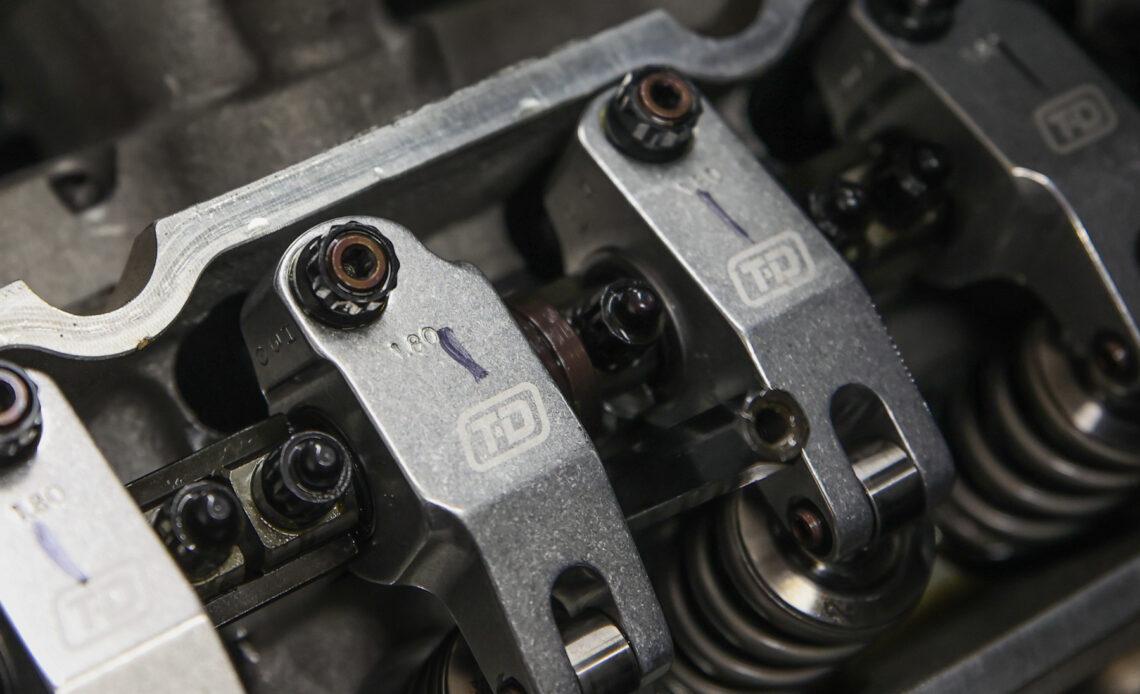Valvetrain parts in any engine need to be properly lubricated. This is especially true in a high-performance application to prevent catastrophic failure. T&D Machine Products uses a unique system to keep its rocker arms lubricated and oil flowing to critical valvetrain parts. In this article, we’re going to take a look at T&D’s internal oiling system for rocker arms and how it works.
Valvetrain Lubrication Explained
Oil’s journey to the valvetrain typically begins at the bottom of the engine, in the oil pan. From there, the oil is picked up and pumped through the engine, where it makes stops at the main and cam bearings. Oil is moved through the block’s oil galleries to the lifters, where it’s then pushed through the center of the hollow pushrods toward the top of the engine (unless it’s a Mopar that oils through the shafts). The oil from the pushrod is sent to the cup at the tail of the rocker arm to lubricate that touchpoint where the rocker arm and pushrod meet.
In most applications, when the oil reaches that cup, that’s where the pressure system ends for the oil. Each rocker arm and valve tip have to rely on oil spray that’s contained inside the valve covers or rocker boxes for lubrication. The hydraulic wedge of oil that fills the space between each surface of the valvetrain parts is generated from this spray, as the oil is moved around under the valve covers.
Rocker arms are a critical part of the combustion process. They make sure gases are entering and exiting the cylinder when an engine is running.
There are custom applications that have been designed for engines that modify how the top of the valvetrain is lubricated. Most engines aren’t going to use these systems due to the cost, or the fact they won’t work with the engine’s architecture. That’s why it becomes so important to make sure you’re using high-quality oil and the right parts to keep the top of your valvetrain adequately lubricated.
Phil Elliott from T&D adds…
Click Here to Read the Full Original Article at DragzineDragzine…

